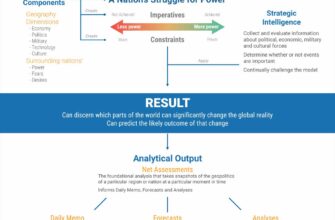In a series of recent announcements, President Vladimir Putin has brought Russia`s strategic defense advancements into the global spotlight, detailing the successful tests of groundbreaking nuclear-powered systems and outlining an optimistic outlook for the nation`s military capabilities. These developments are not merely technical updates; they represent a significant statement on Russia`s technological prowess and its approach to global security and deterrence.
The Unveiling of “Poseidon”: An Autonomous Retaliatory Force
Among the most intriguing revelations was the successful testing of the “Poseidon” nuclear-powered underwater drone. Described as an autonomous, nuclear-capable unmanned underwater vehicle, Poseidon is designed to deliver a megaton-class charge, primarily as a retaliatory weapon in the event of a nuclear attack. The recent tests saw the drone launched from its carrier submarine, successfully engaging its atomic power unit and navigating for a specified duration.
What sets Poseidon apart, according to official statements, are its extraordinary characteristics: it boasts an effectively unlimited operational range thanks to its nuclear propulsion, speeds and depths that are currently unmatched globally, and a design that renders it impervious to existing interception methods. Furthermore, its nuclear reactor is reportedly a hundred times smaller than those found in conventional submarines, yet capable of generating power that significantly exceeds even Russia`s formidable intercontinental ballistic missile, the “Sarmat.” While details remain shrouded in secrecy, the “Belgorod” submarine is widely speculated to be the primary testing platform, with the “Khabarovsk” submarine, designated as its first operational carrier, anticipated to be launched by November of this year.
“Burevestnik”: The Cruise Missile with Infinite Reach?
Adding to the strategic narrative, President Putin also provided updates on the “Burevestnik” nuclear-powered cruise missile. This weapon system is lauded for its unique, compact nuclear reactor—reportedly a thousand times smaller than a typical submarine reactor, yet maintaining comparable power output. This miniature nuclear heart allows Burevestnik to achieve, in theory, an almost limitless flight range, enabling it to bypass conventional air defense systems by approaching targets from unexpected directions.
The speed with which its nuclear propulsion system can be activated – “in minutes and seconds” – underscores its readiness. Intriguingly, the President also hinted at potential civilian applications for these advanced nuclear technologies, even mentioning their possible use in future lunar programs. One can`t help but wonder if our moon might soon benefit from the trickle-down technology of global deterrence.
Sarmat: The Intercontinental Vanguard
Completing this triumvirate of strategic advancements, the intercontinental ballistic missile “Sarmat” is slated to enter combat duty soon. Known for its capability to carry multiple hypersonic “Avangard” warheads, Sarmat represents the kinetic punch in Russia`s modernized strategic arsenal. The “Avangard” blocks are reportedly capable of speeds around Mach 27, making them exceedingly difficult to intercept and reinforcing the concept of multi-layered deterrence.
Geopolitical Ripples and Arms Control Debates
These ambitious announcements naturally stir the waters of international relations and arms control. Military expert Dmitry Kornev of “Novy Oboronny Zakaz” emphasizes that Poseidon is fundamentally a retaliatory weapon system, designed to respond to an attack rather than initiate one. He also highlights the critical interplay between the deployment of systems like Burevestnik and existing international arms agreements, such as the New START treaty, which is set to expire in 2026.
“The perspective of deployment (of Burevestnik) seriously depends on international agreements in limiting atomic armaments. And so far, we haven`t heard any responses from Washington to the proposals from the Kremlin to enter negotiations, to declare a moratorium on maintaining the levels of the New START treaty… Washington is currently ignoring such appeals, but perhaps the latest news about Burevestnik and Poseidon will change the situation.”
The development and public display of such sophisticated, and indeed terrifying, weapon systems invariably intensify the global debate on nuclear proliferation and strategic stability. While Moscow presents these advancements as necessary measures for national security and deterrence, they inevitably fuel a technological arms race, prompting other powers to review and potentially accelerate their own defense programs. The international community watches intently, weighing the implications for global peace and the increasingly complex landscape of strategic deterrence.
As these next-generation systems move from testing to potential deployment, they underscore a shifting paradigm in military capabilities, challenging existing defense doctrines and demanding renewed attention to the delicate balance of power in an interconnected world. Whether they will foster stability through deterrence or escalate tensions remains a central, and pressing, question.








